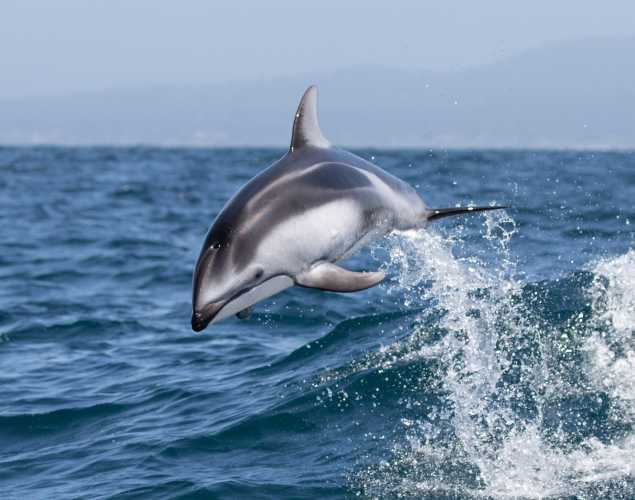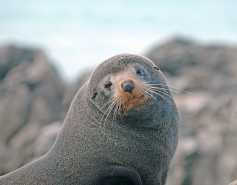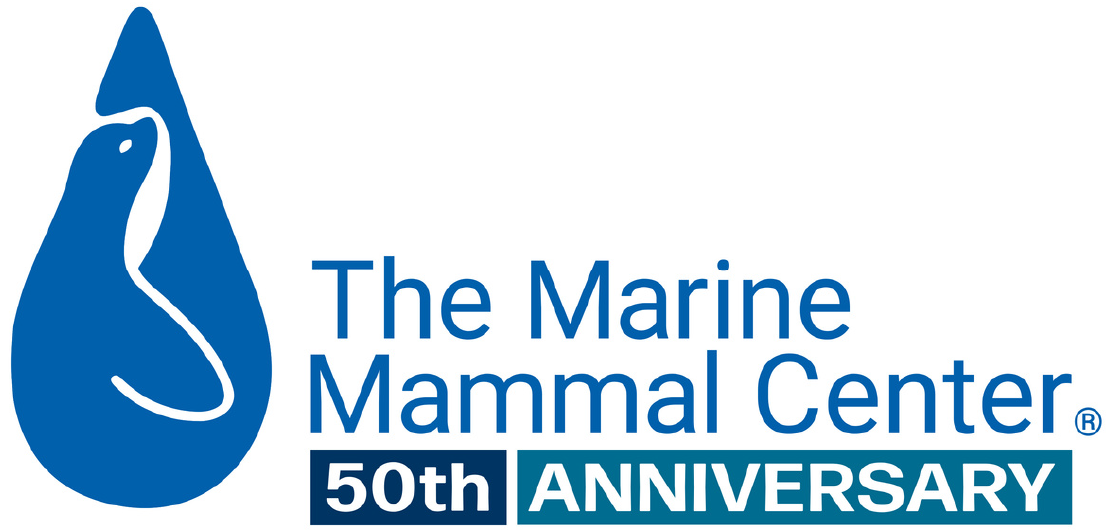
Cetacean Morbillivirus in Odontocetes Stranded Along the Central California Coast
- Infectious disease
- Pathology
Abstract
Effects of cetacean morbillivirus (CeMV) on dolphins vary from causing epidemics to subclinical infections. The former have been documented in the North Atlantic Ocean and Mediterranean Sea but not in the North Pacific Ocean, and the reasons for this are unknown. To explore the distribution of this virus in areas that have not experienced epidemics, we reviewed evidence for morbilliviral infection in odontocetes stranded along the California coast, US from 2000–15. Nine of 212 animals examined histologically had lesions compatible with morbilliviral infection, and 11 were tested for CeMV via reverse transcriptase-PCR. One striped dolphin (Stenella coeruleoalba) was PCR positive, and the sequenced product was most closely related to sequences in two strains found in cetaceans in Hawaii. This study suggests that CeMV may be a cause of morbidity and a rare contributor to mortality in cetaceans stranding along the California coast. Additional work is needed to understand CeMV distribution and host species susceptibility in this region.
Serrano, L., Simeone, C.A., Colegrove, K.M., Duignan, P.J., Goldstein, T., Gulland, F.M.D. 2017. Cetacean morbillivirus in odontocetes stranded along the central California coast, 2000-2015. Journal of Wildlife Diseases. 53(2).
pathology
Pádraig Duignan
Related Publications
{"image":"\/Animals\/Wild\/Other species\/nz-sea-lion-shutterstock.jpg","alt":"New Zealand sea lion","title":"Causes of Death in Two Populations of New Zealand Sea Lions","link_url":"https:\/\/www.marinemammalcenter.org\/publications\/causes-of-death-in-two-populations-of-new-zealand-sea-lions","label":"Research Paper"}

{"image":"\/Animals\/Patients\/California sea lions\/csl-by-bill-hunnewell-c-the-marine-mammal-center-6.jpg","alt":"California sea lions","title":"Zoonotic Bacteria Persistence and Susceptibility","link_url":"https:\/\/www.marinemammalcenter.org\/publications\/zoonotic-bacteria-persistence-and-susceptibility","label":"Research Paper"}

{"image":"\/Animals\/Patients\/California sea lions\/cropped-images\/csl-photo-by-bill-hunnewell-c-the-marine-mammal-center-1-0-0-2358-1722-1600891644.jpg","alt":"California sea lions","title":"Emerging Viruses in Marine Mammals","link_url":"https:\/\/www.marinemammalcenter.org\/publications\/emerging-viruses-in-marine-mammals","label":"Research Paper"}

{"image":"\/Animals\/Patients\/California sea lions\/csl-photo-by-bill-hunnewell-c-the-marine-mammal-center-12.jpg","alt":"two California sea lions","title":"Multi-Phase Muscle Breakdown in California Sea Lions","link_url":"https:\/\/www.marinemammalcenter.org\/publications\/multi-phase-muscle-breakdown-in-california-sea-lions","label":"Research Paper"}

Recent News
{"image":"\/Animals\/Patients\/Hawaiian monk seals\/2025\/cropped-images\/d-ru28release-exam-at-ke-kai-ola111025photo-by-giancarlo-rulli-c-the-marine-mammal-center-noaa-permit-24359-0-0-1270-992-1764620886.jpg","alt":"","title":"Bird Flu Vaccine Trial Offers Hope for Protecting Hawaiian Monk Seals","link_url":"https:\/\/www.marinemammalcenter.org\/news\/bird-flu-vaccine-trial-may-offer-hope-for-protecting-hawaiian-monk-seals","label":"News Update","date":"2025-12-01 08:13:00"}

Bird Flu Vaccine Trial Offers Hope for Protecting Hawaiian Monk Seals
December 1, 2025
Read More{"image":"\/Animals\/Patients\/Hawaiian monk seals\/2021\/hms-pp08-by-sheila-latta-c-the-marine-mammal-center-noaa-permit-18786.jpg","alt":"Hawaiian monk seal","title":"The New York Times: Inside the Bird-Flu Vaccine Trial for Monk Seals","link_url":"https:\/\/www.marinemammalcenter.org\/news\/the-new-york-times-inside-the-bird-flu-vaccine-trial-for-monk-seals","label":"In the News","date":"2025-12-01 01:00:00"}

The New York Times: Inside the Bird-Flu Vaccine Trial for Monk Seals
December 1, 2025
Read More{"image":"\/Animals\/Wild\/Sea otter\/so-wild-morro-bayphoto-c-brian-simuro-20.jpeg","alt":"Sea otter and pup","title":"Watch a Sea Otter Pup Reunite With Its Mother","link_url":"https:\/\/www.marinemammalcenter.org\/news\/watch-sea-otter-pup-reunite-with-its-mother","label":"News Update","date":"2025-11-14 10:35:41"}

{"image":"\/Animals\/Wild\/Sea otter\/sea-otter-photo-c-brian-simuro.jpeg","alt":"Sea otter","title":"AP News: Baby sea otter is reunited with mother in central California after dramatic rescue","link_url":"https:\/\/www.marinemammalcenter.org\/news\/ap-news-baby-sea-otter-is-reunited-with-mother-in-central-california-after-dramatic-rescue","label":"In the News","date":"2025-11-14 09:46:34"}

AP News: Baby sea otter is reunited with mother in central California after dramatic rescue
November 14, 2025
Read More
